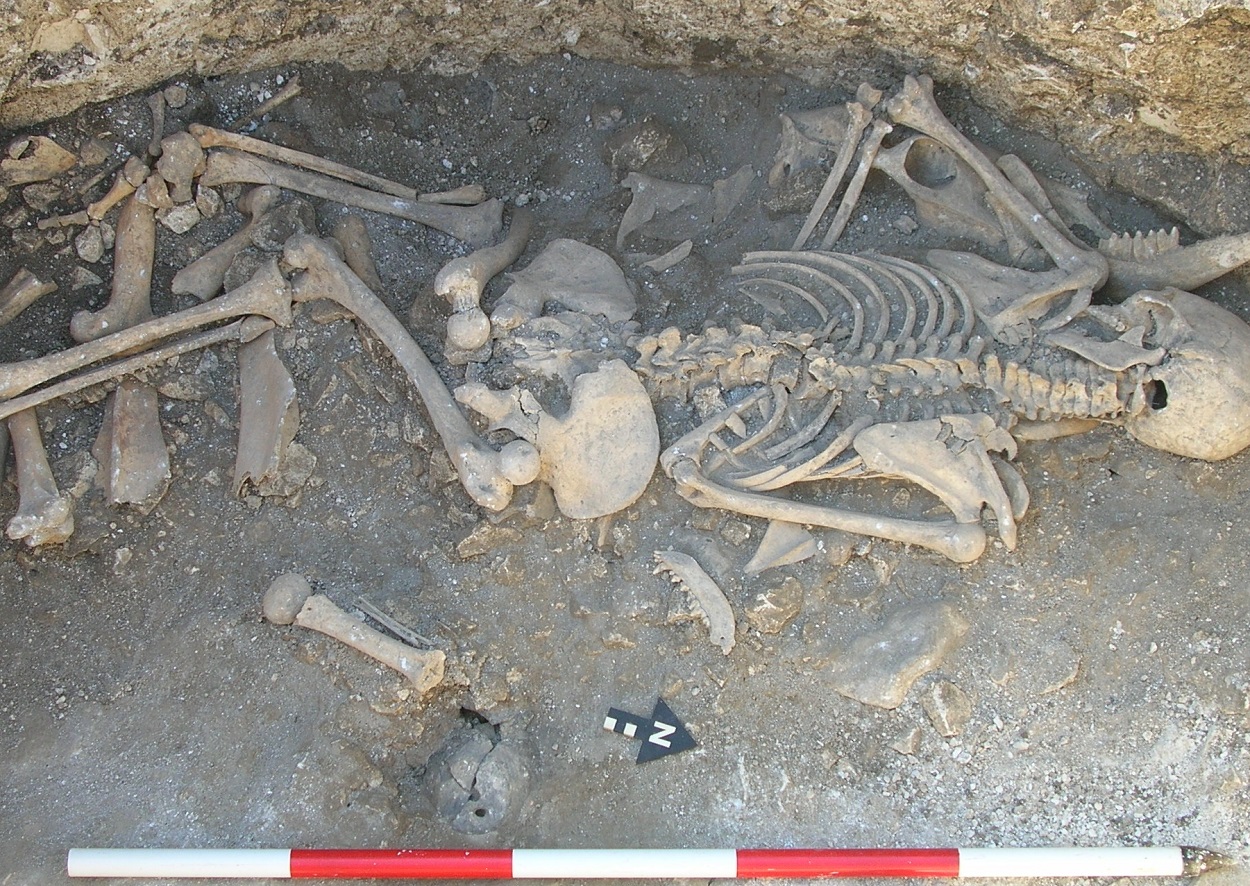Archaeologists from Bournemouth University have uncovered an Iron Age victim of human sacrifice in Dorset, England.
The sacrificial victim was found lying at the bottom of a pit and placed on carefully arranged animal bones. A study of the skeletal remains indicate that she died during her late twenties from a stab wound to her neck.
Dr Martin Smith, Associate Professor in Forensic and Biological Anthropology at Bournemouth University, said: “The young woman was found lying face down on top of a strange, deliberately constructed crescent shaped arrangement of animal bones at the bottom of a pit, so it looks like she was killed as part of an offering,”
Examples of Iron Age sacrifice in Britain are very rare, with most accounts coming from later Roman and Greek sources. According to the researchers, this is physical evidence that human sacrifice took place in Iron Age Britain.
By examining the bones, archaeologists have uncovered new details about the victim’s life, helping to piece together parts of her story.
The isotopes in her teeth suggests that she originated from a settlement around twenty miles away. A DNA analysis (ongoing) will establish whether she was brought to the settlement as an outsider from another community.
A section of her spine exhibits significant degeneration and arthritic changes, suggesting she endured a physically demanding life that took a toll on her body.
“All the significant facts we have found such as the problems with her spine, her tough working life, the major injury to her rib, the fact she could have come from elsewhere, and the way she was buried could be explained away in isolation,” said Dr Smith.
Header Image Credit : BU
Sources : Bournemouth University







